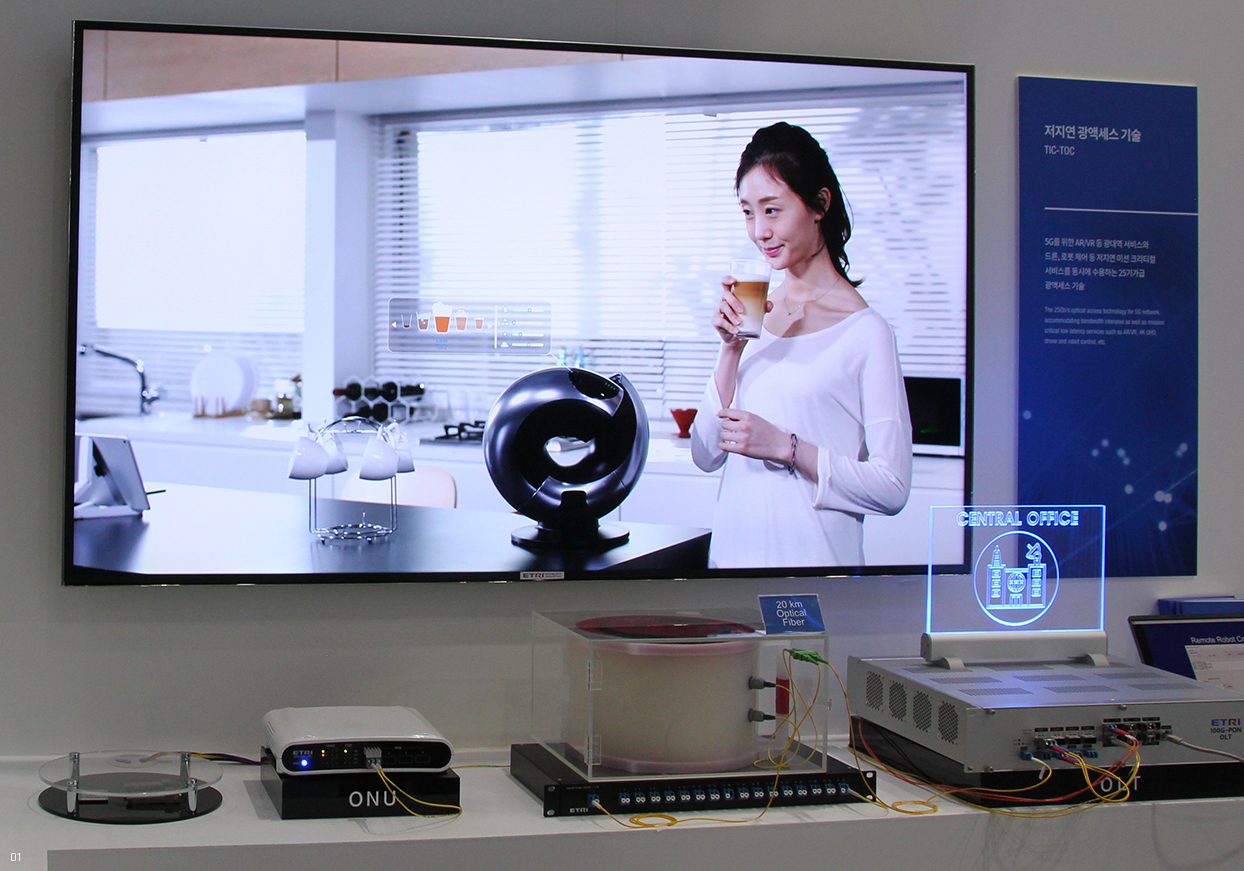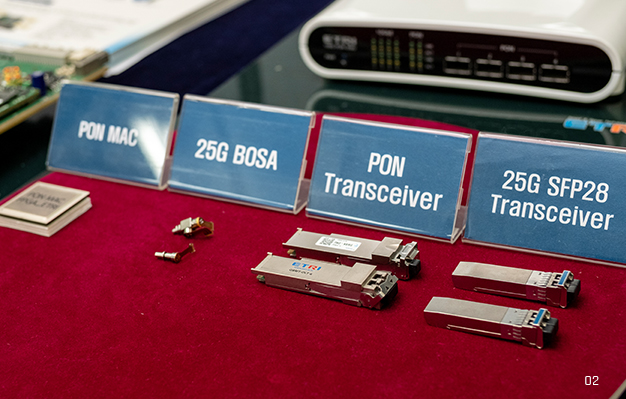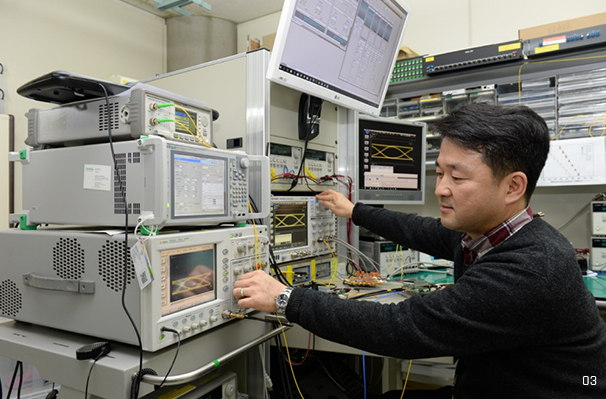
ICT Trend
Three super bases:
super intelligence, super connection, super real
Technologies for Super-real AI Services
-
0.001 Second
for Human Sensing -
We are now witnessing and experiencing numerous transmissions of data via autonomous vehicles, along with real-time remote medicine, and the IoT. However, the amount of data is set to increase exponentially in the near future. That being the case, how should we prepare for the super-real society that is coming towards us through proliferation of new media such as 8K UHD broadcasting, VR, AR and holograms? We urgently need to come up with core technologies for the effective materialization of wired and wireless data services.
Our ears only need 1/10 of a second to sense sound information, while our eyes and skin need 1/100 of a second and 1/1,000 of a second respectively to sense information. The online systems that utilize the human senses to deliver information quickly are referred collectively to as the “Tactile Internet.”
Certain technologies are required to “sense” transmitted information after establishing a connection with the Wi-Fi network. One of them is optical access - an optical network technology that connects service provider to subscriber within a range of 20 km, thus enabling wired and wireless services.
-
Tactile Internet
Defined by the ITU as a service with
a high degree of availability, reliability
and security, along with an ultra-low
latency of 1 ms.
-
01
25-Gbps optical access technology for
5G-based broadband services such as
AR and VR, control of drones and robots,
and low latency mission critical services. 
-
Revolutionary speed-up, the elimination of lags, reduced power consumption, cost and size, and enhanced intelligence of the optical access network are the prerequisites of the project. ETRI has endeavored to develop a wired/wireless access integrated optical network technology (SWAN) based on the user defined network (SDN).
As a result, ETRI succeeded in developing the core technology for the 25-Gbps connection in November 2018, which is far faster than the 2.5-Gbps of the current wired Internet. This will enable data delivery in 0.001 of a second for human sensing, and will also usher in the new era of the full-fledged tactile internet.




